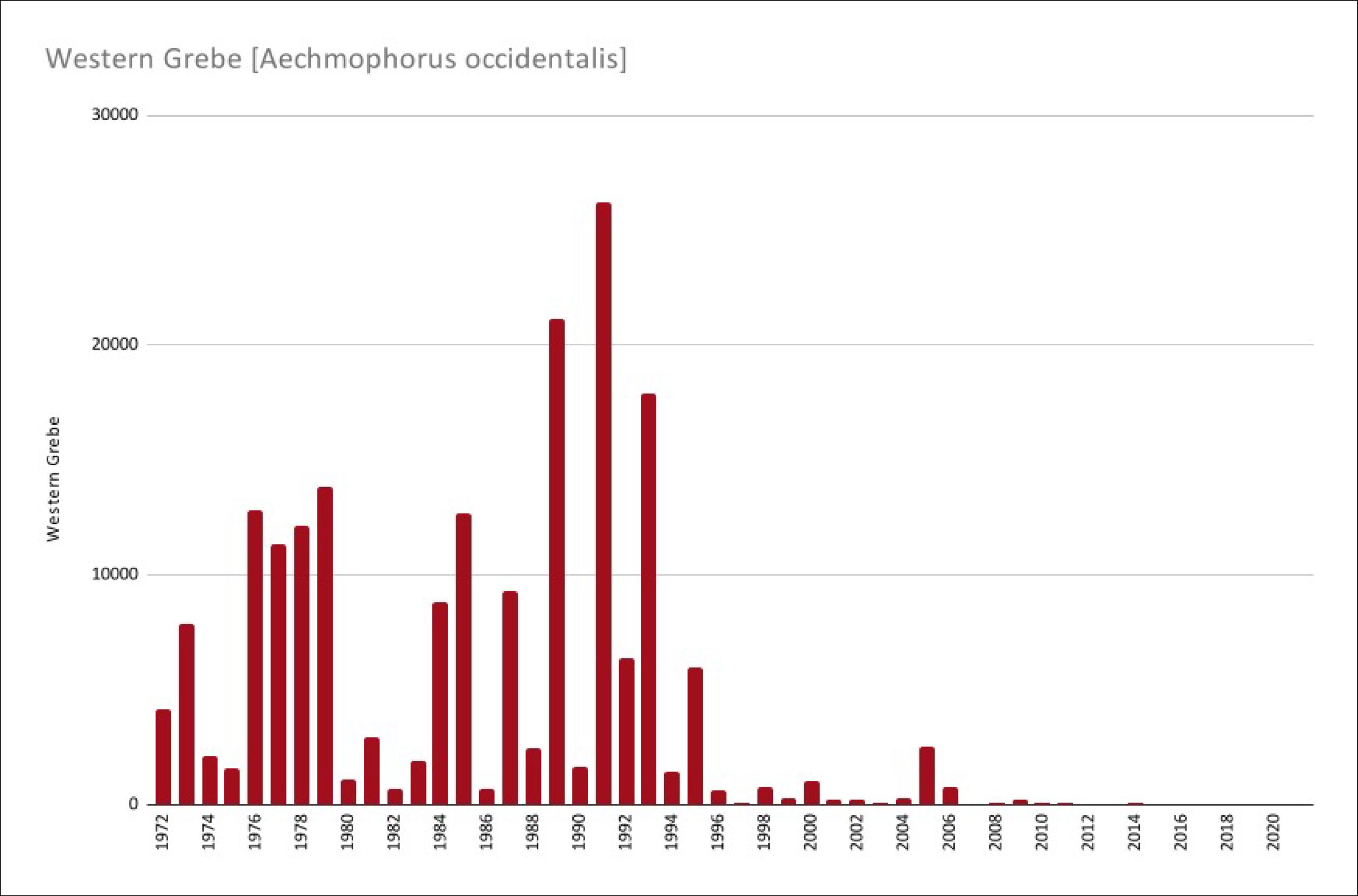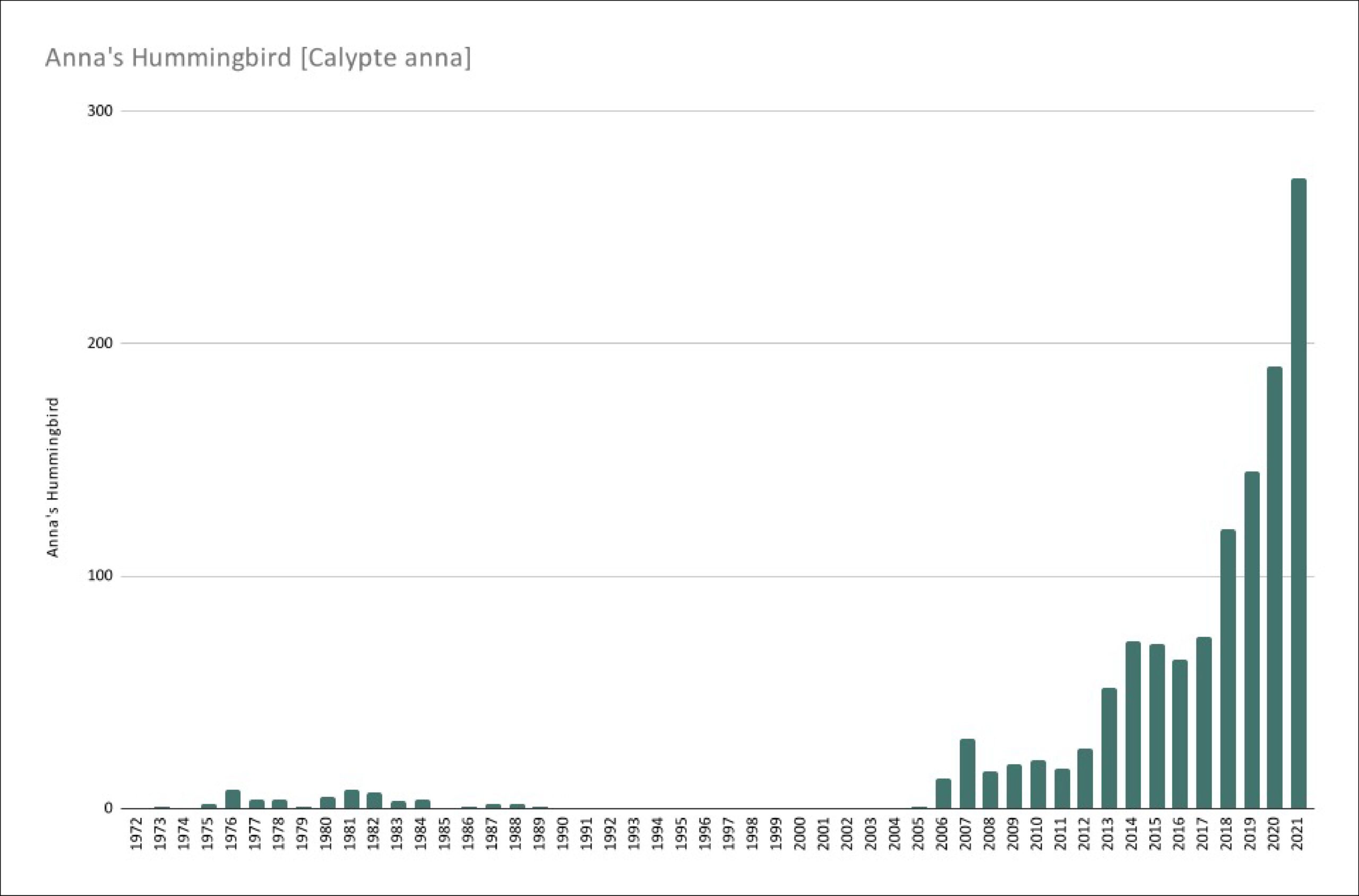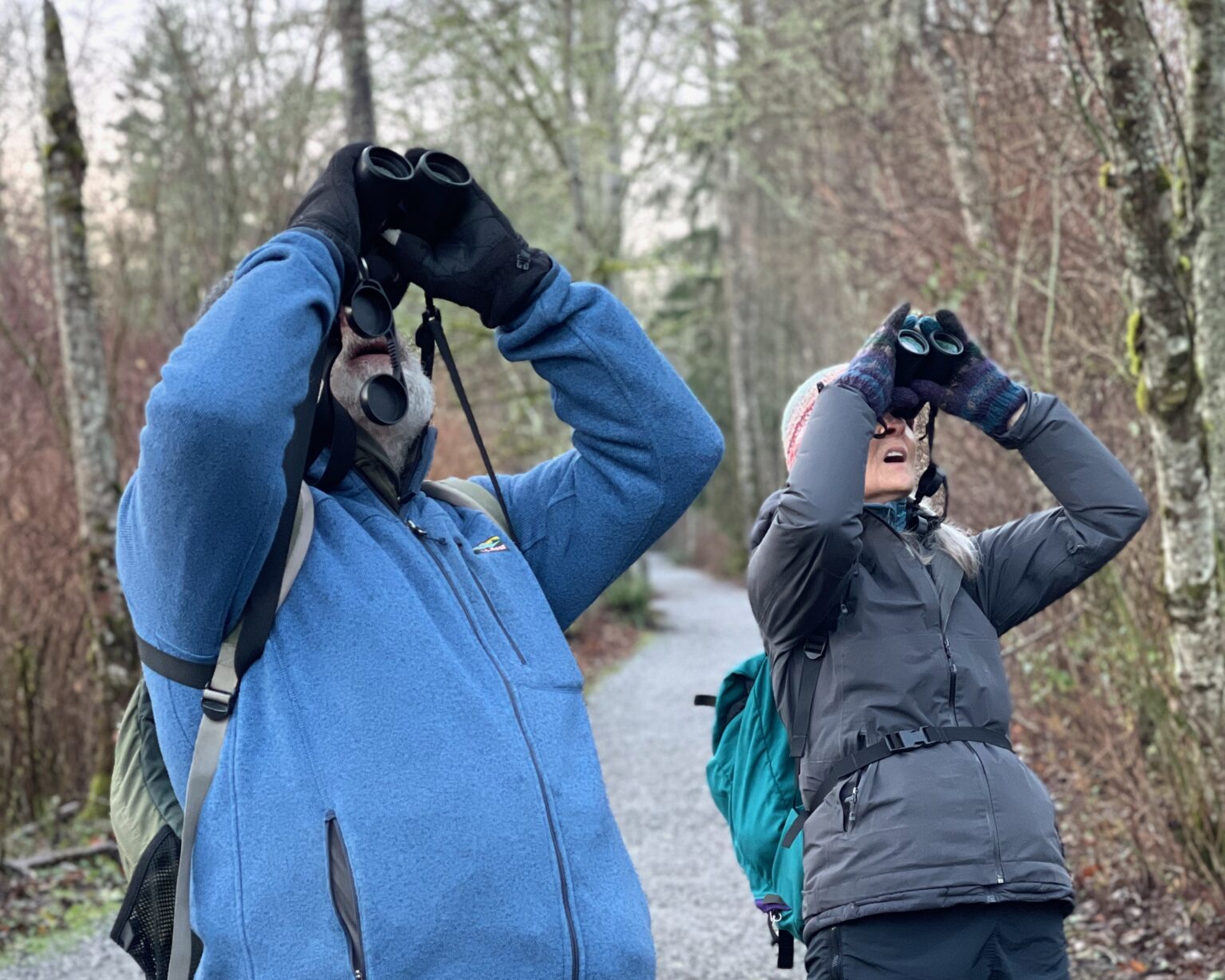Doug Brown set off down a path around Whatcom Falls Park just before sunrise on Dec. 19, 2021, listening intently to the rustle of leaves, the crunch of boots hitting dirt and the rushing waters of a nearby creek.
“Hear that chirp?” he asked his team of experienced birdwatchers. “It’s a Downy Woodpecker.”
He lifted his binoculars and spotted the little brown and black bird high in the trees. It let out another chirp, a high-pitched string of notes, and Brown added a tally mark in his notebook.
Brown is just one of thousands of volunteers who participate in the Christmas Bird Count, a nationwide bird census hosted by the National Audubon Society. Across the country, experienced and amateur bird watchers alike collect data in their community in mid-December, tracking population changes and migration patterns.
“It’s really an opportunity to get a picture of the birds in our area at this time of year from just ordinary citizens,” explained Pam Borso, the education and volunteer coordinator at Whatcom’s local Audubon chapter, the North Cascades Audubon Society. “It’s a great opportunity to engage ordinary citizens in caring for birds and bringing people together at this time of year. Some are scientists, some are ornithologists, some are bakers, some are grocery clerks, some are teachers. Anybody can participate.”
The count has been vital for researchers monitoring bird health over the years.
“It’s essential to monitor the health of bird populations as they react with the health of human populations,” said Joe Meche, the former president of the North Cascades Audubon Society. “It’s essential to monitor the whole ecosystem that we live in.”
During the 2021 count, volunteers identified more than 57,000 birds from 127 species across Whatcom County.
“We can look at data from the last 52 years, and we can compare how many birds they saw then to now,” Borso said. “The National Audubon Society uses the Christmas Bird Count data to project what the ranges are for the birds, and how it’s going to change in the next 50 years.”
Data available from the Audubon Society shows bird populations changing dramatically over the last 50 years, with several species disappearing while others arrived in droves.
The Western Grebe population, which peaked with more than 26,000 grebes spotted during the 1991 Christmas bird count, has plummeted across the region, with only two birds spotted during the 2021 count.
 Western grebe populations have decreased dramatically in recent years. More than 26,000 Western grebes were spotted during Whatcom’s 1991 Christmas bird count, but in 2021, only two were recorded, according to data from the National Audubon Society. (Julia Lerner/Cascadia Daily News)
Western grebe populations have decreased dramatically in recent years. More than 26,000 Western grebes were spotted during Whatcom’s 1991 Christmas bird count, but in 2021, only two were recorded, according to data from the National Audubon Society. (Julia Lerner/Cascadia Daily News)
Anna’s hummingbird populations, though, have risen dramatically in recent years.
“Thirty years ago, Anna’s hummingbirds didn’t winter here because it was colder,” Borso said. “Now, though, Anna’s hummingbirds winter here. This year, volunteers counted 271.”
Anna’s hummingbirds, small green and pink birds, were rare sights during early Christmas Bird Counts in the county. Until the early 2000s, counters were lucky to spot more than one or two each year.
 Anna’s hummingbird populations have increased dramatically in Bellingham, as well as across the Pacific Northwest, in recent years, according to data from the National Audubon Society. (Julia Lerner/Cascadia Daily News)
Anna’s hummingbird populations have increased dramatically in Bellingham, as well as across the Pacific Northwest, in recent years, according to data from the National Audubon Society. (Julia Lerner/Cascadia Daily News)
“We never used to get hummingbirds in the winter, but now they’re here over winter,” said Brendan Wahl, the son of Whatcom’s Christmas Bird Count founder Terry Wahl. “Anna’s hummingbirds, their natural range was in California, but they’ve been moving further north and staying north. They’ve even been seen in Southeast Alaska now that winters are milder.”
“If birds cannot adapt or move to some place where they can have some robust habitat, they won’t survive.” — Pam Borso
Researchers are using the Christmas Bird Count data to understand ecosystem shifts, and have identified “staggering declines” of bird populations. According to the study, published by Science in 2019, “declines are not restricted to rare and threatened species — those once considered common and wide-spread are also diminished.”
The study authors estimate a net loss of around 3 billion birds over the last 50 years.
“Over the years, the numbers of birds have gone down significantly due to a lot of extenuating circumstances,” Meche said.
Climate change, availability of food sources, and changing infrastructure all contribute to the disappearance of birds in the region.
“We’ve got huge habitat loss,” Borso said. “We’ve got pesticides, development, cars, cats, and climate change, which is probably the biggest threat at this point. If birds cannot adapt or move to some place where they can have some robust habitat, they won’t survive.”
The bird count has allowed scientists and researchers to understand national trends in bird health by putting boots on the ground in communities across the country.
“The Christmas bird count is an incredible program,” said Trina Bayard, the director of bird conservation for Audubon Washington. “The Christmas bird count is really helpful for scientists looking at big picture patterns and changes in bird populations across North America. It also helps people who conduct the counts in the same places year after year notice changes in bird use of their local area.”
Brendan, who has participated in bird counts since he was a child, says the counts provide opportunities for people to learn more about birds and support scientific research, even if they aren’t scientists.
“Over time, with an event like that, you get a really clear picture of what birds are there and how conditions and things are changing,” Brendan said. “It’s citizen science. In the earliest days, people came from Seattle, from Vancouver, and local people.”
Terry Wahl co-founded the Christmas Bird Count in Whatcom with James Duemmel in 1967, though the first national count occurred on Christmas day in 1900 with 27 volunteers in 25 communities across the United States and Canada.
“The one thing my father stressed is that the count should always be enjoyable,” Brendan said. “People should enjoy it and know that they’re doing something positive for the world at large.”
On the morning of the 2021 bird count, Anna’s hummingbirds zipped through the trees, making sharp chirping sounds. Around 8:30 a.m., a young woman walking her dogs approached Brown, and asked if he had spotted any owls yet.
“Not yet, but we hope!” he responded.




